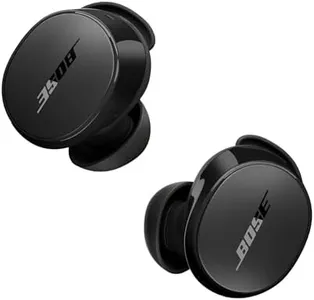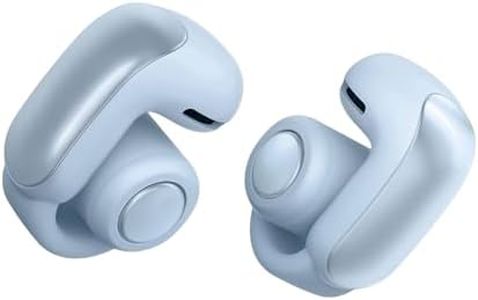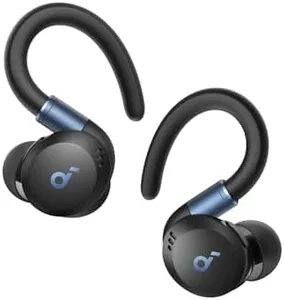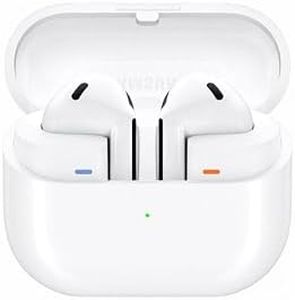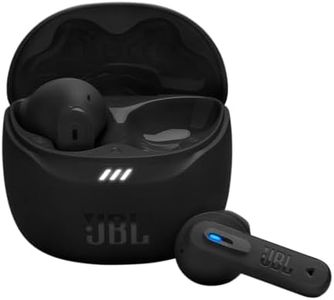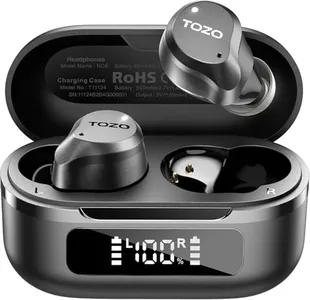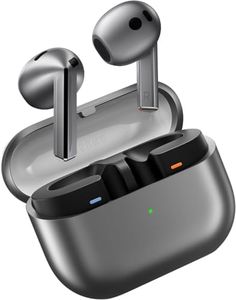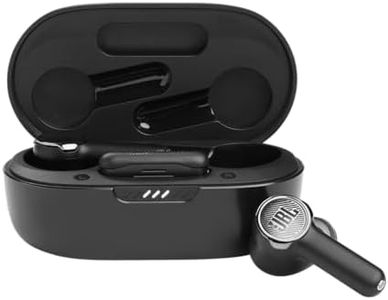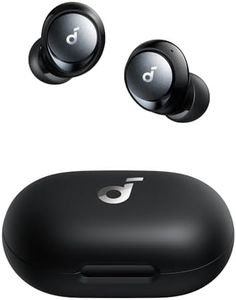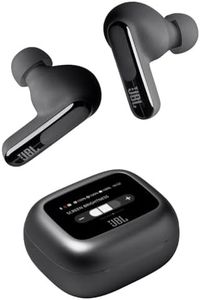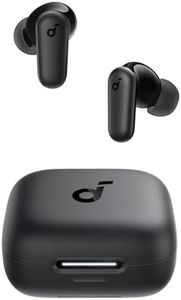We Use CookiesWe use cookies to enhance the security, performance,
functionality and for analytical and promotional activities. By continuing to browse this site you
are agreeing to our privacy policy
10 Best Bass Earbuds
From leading brands and best sellers available on the web.By clicking on a link to a third party's website, log data is shared with that third party.
Buying Guide for the Best Bass Earbuds
When shopping for bass earbuds, it’s important to understand that not all earbuds are built the same—some are designed to make the low notes (the 'bass') sound much deeper and stronger. If you love music genres like hip-hop, EDM, or pop that rely heavily on bass, finding earbuds that emphasize those frequencies can really improve your listening enjoyment. However, what sounds 'bassy' to one person can be too much for another, so you’ll want to pay attention to all the main features and find the balance that fits your taste. Making the right choice also means thinking about comfort, fit, battery life, and extra features that could enhance your music experience. Here's how you can decode the key specs when shopping for bass earbuds.Frequency ResponseFrequency response tells you the range of sounds, from the lowest bass to the highest treble, that the earbuds can produce. The lower the first number, the deeper the bass the earbuds are physically capable of playing. For example, frequency responses that start around 20 Hz can reproduce most of the bass you’ll actually hear in music, while those that go even lower (to about 15 Hz) might offer a bit more depth. For most people, anything below 20 Hz is hard to hear but can be felt as a vibration. When you shop, look for earbuds with a frequency response that starts as low as possible—this indicates they’re built to reach those low bass notes. But remember, a wide frequency range doesn’t always guarantee a strong bass in practice; it's just one clue.
Driver SizeThe driver is the part inside the earbud responsible for producing sound. In general, larger drivers can move more air, which helps create deeper and more noticeable bass. Earbud drivers typically range from around 6 mm to 12 mm. Drivers at the higher end of that range—like 10 to 12 mm—are more likely to deliver powerful bass, but the overall design of the earbud also plays a part. If you want punchy, strong bass, it's wise to look for models with larger drivers. But if you prefer a more balanced sound with not too much bass, medium-sized drivers might be a better fit.
Earbud Seal and FitThe way earbuds fit in your ear has a huge impact on bass performance. A tight, snug seal helps trap the sound and stops bass frequencies from leaking out, making them feel more pronounced and richer. You'll often see silicone or memory foam tips included in the box so you can find the best fit. If the seal isn’t good, even the best drivers can sound weak. When choosing, think about your ear shape and pick earbuds with multiple ear tip options, and try them out to ensure a proper fit. If comfort and bass are both priorities, always test the fit before making your final decision.
Bass Boost and EQ CustomizationSome earbuds offer special modes or built-in equalizer (EQ) settings that let you boost the bass even more. This feature can be useful if you like to switch between music types or want to fine-tune your sound at any time. EQ customization might be available through a smartphone app or onboard controls. When comparing, look for earbuds that advertise bass boost or customizable EQ features. If you’re a fan of deep bass, these options let you adjust the sound to match your mood or your favorite tracks.
Noise Isolation/Noise CancellingNoise isolation (passive) uses the earbud design to block outside noise, while noise cancelling (active) uses technology to reduce background noise electronically. Both can help make bass sound more solid and powerful by letting you focus on the music, not the noise around you. If you're often in noisy environments like public transport or crowded streets, noise cancelling can really help you enjoy punchy bass without raising the volume too high. For users who usually listen in quiet places, basic noise isolation may be enough for strong bass.


